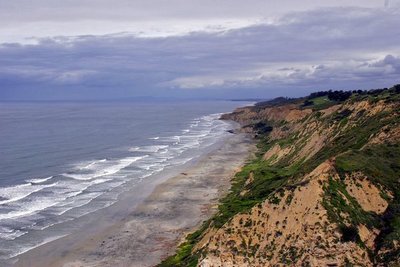December 3, 2009
Environmental health professor answers questions about MRSA found on Washington beaches
A number of news media articles followed environmental microbiologist Dr. Marilyn Roberts’ September 2009 report that she and her research team found methicillin-resistant Staphylococcus aureus (MRSA) on public beaches in Washington state. Complete details of the pilot study are published in the December issue of the Journal of Antimicrobial Chemotherapy.
Roberts is a professor in the Department of Environmental and Occupational Health Sciences, School of Public Health. She studies how environmental factors, such as pathogens, can harm human health and how to identify, prevent, and control these effects. UWeek talks with Roberts’ about her research.
Q: Why was this study on MRSA significant?
A: It was the first to identify and characterize MRSA from marine water and beach sand samples. The isolation of Staphylococcus aureus (S. aureus) and MRSA in public marine beaches correlates with previous laboratory studies, showing that both S. aureus and MRSA can survive in river, sea, and swimming pool water.
Q: Are Washington state beaches unique in that they contained MRSA?
A: No—MRSA is not unique to Washington state beaches because another paper just published in Water Research, a journal of the International Water Association, found MRSA in the water and on beaches in Catalina Island, off the coast of southern California. And in February at a scientific conference, a third group reported finding MRSA in Florida marine waters. Neither of these studies characterized the strains of MRSA recovered. But these studies indicate that MRSA is now found in both the Pacific and Atlantic Oceans, and any beach associated with either body of water could potentially have MRSA.
Q: How likely is it for someone to pick up MRSA at the beach and get an infection from it?
A: The answer to that question is not clear. No studies have been done to address this question. MRSA was once restricted to hospital settings, but community-acquired infections are now more common. MRSA has been isolated from surfaces used by the public. However, with few exceptions, the source of these community-acquired MRSA infections are not always clear, even considering publicized MRSA outbreaks such as those among jailed inmates, children attending daycare, sports teams, and others with no health-care setting exposure or apparent risk in the community
Q: Should the public be concerned about going to the beach?
A: I still enjoy going to the ocean and would advise others to do the same. It’s wise for beachgoers to cover open wounds and to remove as much sand as possible before traveling home and washing off the remaining sand on returning home.
Frequent hand washing is very important for protecting against many types of infection, including the precautions people are taking against H1N1. In addition, if a person develops a skin rash or infection, high fever, or is very sick for more than a few days, then they should always seek immediate medical attention.
Watch an archived press conference with Marilyn Roberts discussing her research.

